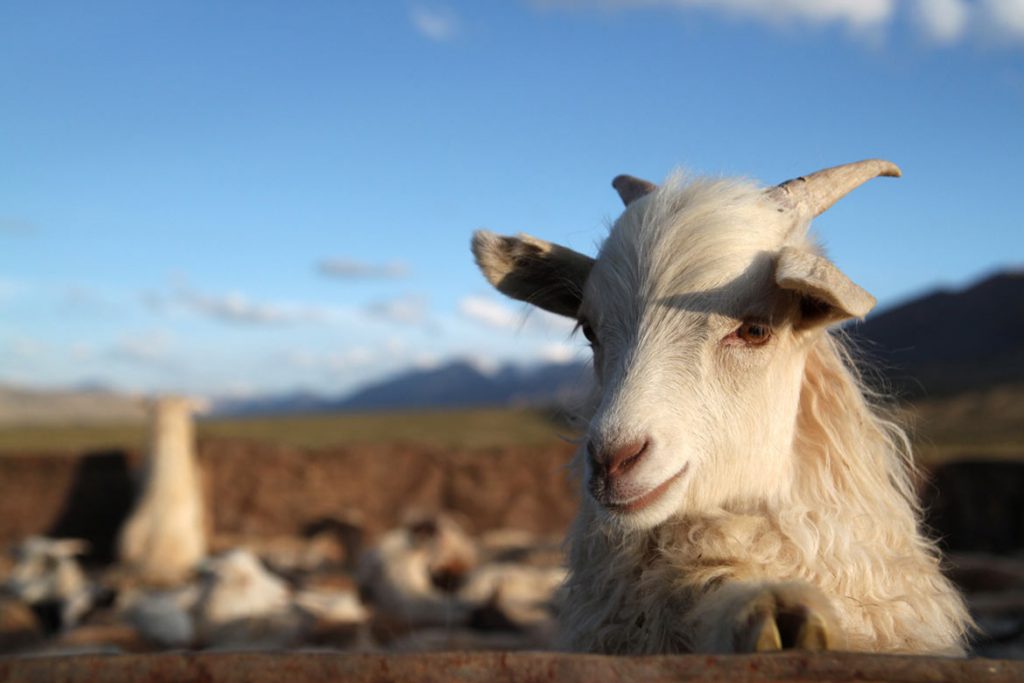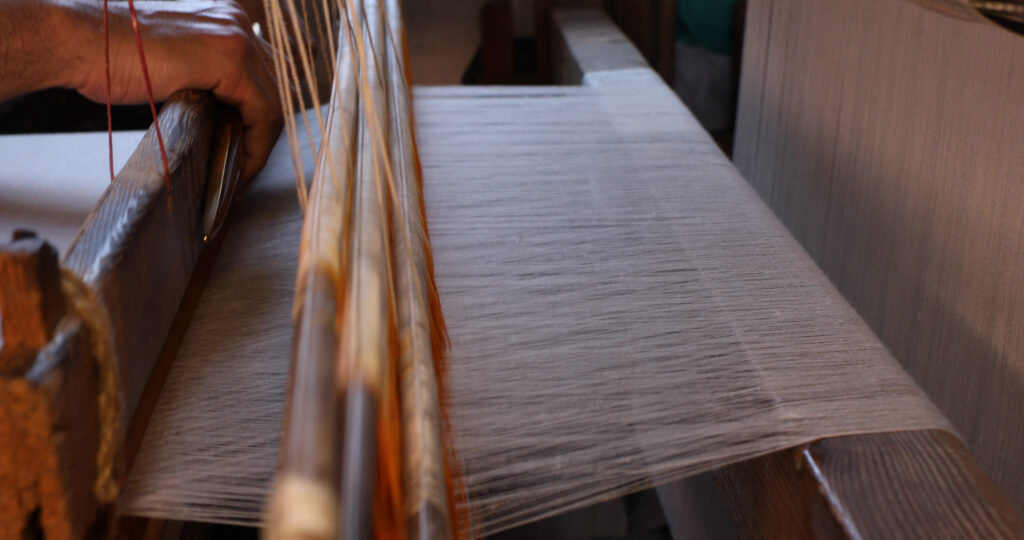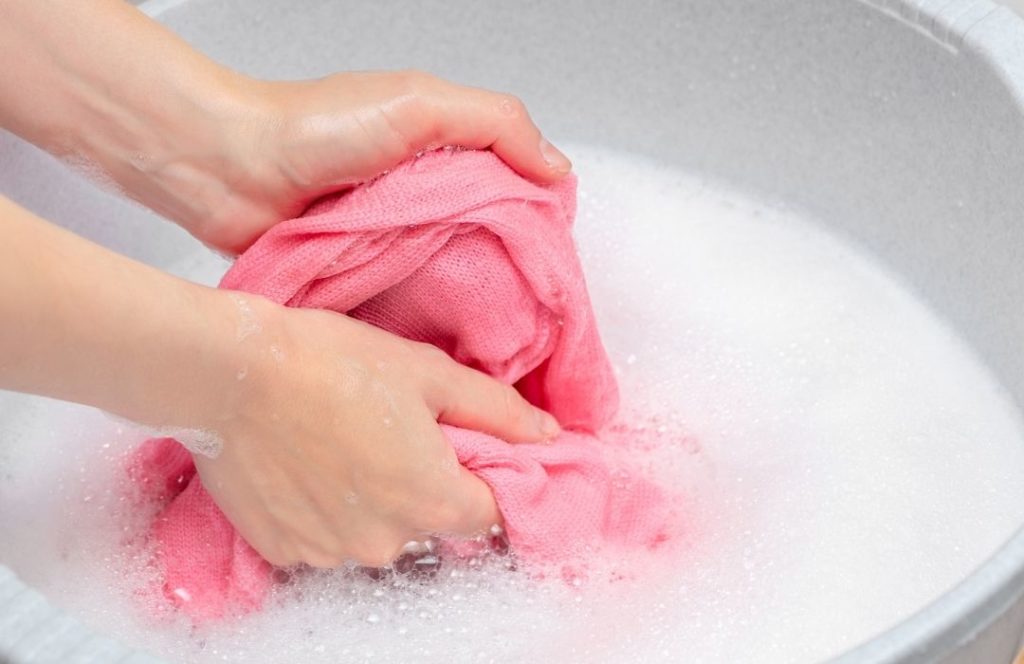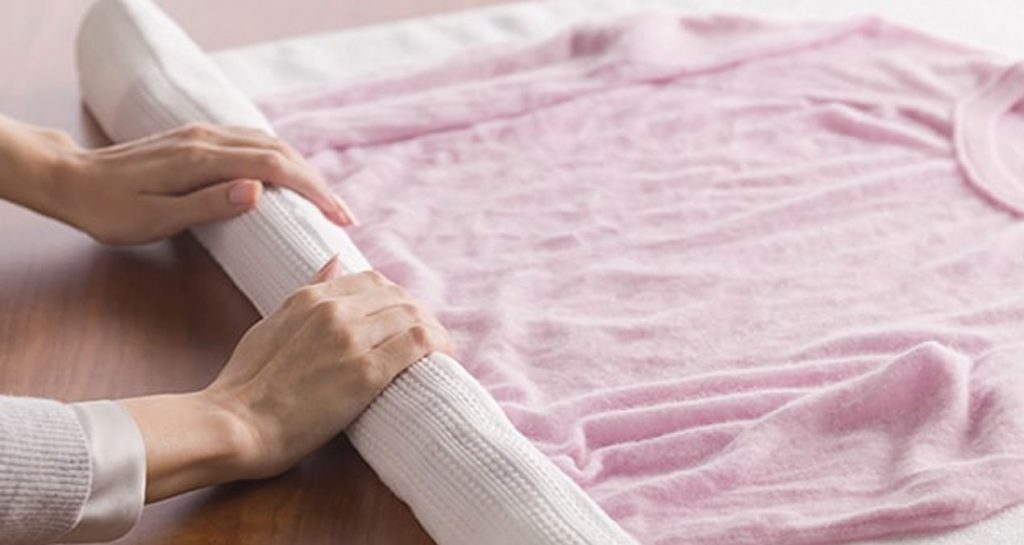Buying a Pashmina is an immensely luxurious event as the beauty of Pashmina is defined in terms of value and quality. Defined by the high grade of Cashmere, Pashmina redefines luxury manifold. The finest Cashmere is one of the most luxurious fabrics in the world. Crafting such fineness is the Pashmina Craft. After buying a Pashmina, there is often a thought about how to properly take care of your Pashmina to secure and reserve the luxury for generations. Before getting to know about the precautions and measures for taking care of Pashmina, one should be aware of the Craft and its phases.
Maintaining the opulent softness and long-lasting beauty of Pashmina shawls requires proper care. Pashmina, which is made from the finest Cashmere fibers, is delicate and needs extra care to stay in perfect condition. Understanding the fiber's special characteristics, such as its sensitivity to moisture and friction, is essential to optimal treatment. You may prolong the life of your Pashmina shawls and prevent damage by using careful cleaning and storage techniques, so you can continue to appreciate their beauty for many years to come.
It's crucial to develop a regimen for caring for your Pashmina shawl that involves routine cleaning and careful storing. Dry cleaning or hand washing are frequently advised because machine washing may cause distortion or shrinking. To avoid moth damage, store in a cool, dry location away from the sun. You may also want to use breathable cotton bags. By taking good care of your Pashmina shawls, you not only preserve your investment but also pay tribute to the artistry and tradition that go into making these beautiful garments.
Procuring the finest Cashmere

A rare species of Goats known as Changhthanghi Goats have an undercoat of Pashmina wool around their bodies to prevent the harsh winters from entering their bodies. They are medium-sized goats with two twisted horns. They develop the wool on their bodies while the winter is at its peak and the temperature goes to a minimum of minus 40 degrees Celsius. Eventually, when the season of winter changes to summer, the goats shed this wool off by rubbing it with rocks and barks. The herders also comb the excess wool off to sell in the market. Due to the rare species of Goats, the portion of Ladakhi Cashmere herders acquires is 80 to 160 gms a year. The wool is fine Cashmere wool.
There are diverse breeds of cashmere-producing goats. Each breed has a specific percentage of production in the total production. The several breeds viz; Australian Cashmere Goat, Liaoning, Inner Mongolia, Xinjiang, Hexi, Zhonghwei, Tibetan Plateau, Luliang breeds, Changthanghi, etc. Therefore, all the breeds produce Cashmere wool that produces warmth. The exclusive breed of goats called Changra Goats is a rare species of goats that produce the finest Cashmere.
In addition, the Goats produce fine Cashmere wool once every year. Therefore, goats produce only around 80 to 170 gms of Ladakhi Cashmere a year. Therefore, considered the rarest. Also, other breeds of it produce several times more as there are almost 400 million Cashmere eliciting Goats all over the world. Consequently, the production caters to the manufacture of different styles like Pashmina Shawls, Cashmere Scarves, and Cashmere Wraps.
The Luxurious Craft of Pashmina
The foremost step is the cleaning of the Cashmere wool. There is a thorough cleaning of the wool to get all sorts of dirt out. After the process of cleaning, the next step is the process of Spinning. It begins by giving the local women the Cashmere wool to spin it fine Cashmere yarn. The womenfolk of the valley mainly spin the Cashmere wool. The process is done on the wooden wheel/charkha called yinder in the local language. Thus, the women artisans meticulously spin the Cashmere wool to the miraculously fine Cashmere yarn.

The spun Cashmere yarn is taken to the local workshops/karkhanas to move ahead in the Pashmina Art. The next process is the weaving process. The weaving is the transformation of Cashmere yarn to the fine Cashmere fabric. The intricate warps and wefts create the beautiful woven Cashmere fabric. Therefore, the most common pattern in weave is chashm_e_bulbul or the diamond weave. The weave is exclusively the masterpiece in itself. The eloquently woven Cashmere fabric goes on to further design.
Also read: ORIGIN OF PASHMINA IN KASHMIR
Pashmina Shawls
Pashmina shawls, prized for their extraordinary warmth and softness, are a byword for elegance and luxury. The fine undercoat of Changra goats, which flourish in the frigid conditions of locations like Kashmir, is used to make these gorgeous clothes, which have their origins in the high-altitude Himalayan areas. The goats are hand-combed by talented artisans during the molting season in order to extract the exquisite fibers. Because only the softest, finest fibers are gathered using this time-consuming process, every shawl is a one-of-a-kind work of art that highlights the rich artistic tradition and craftsmanship of its place of origin.
Beyond its opulent fabric, Pashmina shawls are beautiful because they frequently include elaborate patterns and motifs that capture the region's cultural diversity. Beautifully woven into the fabric are traditional designs like paisleys and floral accents, which are frequently accentuated by painstaking hand stitching or weaving techniques. These creative accents give the shawls depth and personality, making them exquisite fashion pieces. Pashmina shawls are a classic addition to any wardrobe since they may be worn simply draped over the shoulders or dressed as a statement piece for formal events.
Apart from its visual attractiveness, Pashmina shawls are also significant in terms of ethical craftsmanship and sustainability. Many of the craftspeople who make these shawls place a high value on ethical behavior, making sure that the goats are handled humanely and that the harvesting techniques are ecologically sustainable. By purchasing a Pashmina shawl, you are not only getting a pricey accessory but also promoting sustainable practices and traditional workmanship that protect the environment and the livelihoods of the workers. Pashmina shawls are more than just clothing because of their beauty, tradition, and ethical manufacture; they are cherished treasures that will be appreciated for many generations.
Cashmere Scarf
A cashmere scarf adds sophistication and elegance to any ensemble, making it more than just an accessory. Created from the undercoat of Cashmere goats, Cashmere's unmatched softness envelopes you in opulent comfort, making these scarves a pleasant addition to your collection. A cashmere scarf gives a layer of warmth and a sophisticated charm that enhances even the most basic outfits, whether it is worn dressily with a fitted coat or informally draped over a sweater.
Innovatively crafted, cashmere scarves are available in a wide range of hues, patterns, and textures, providing countless styling options. Each scarf demonstrates the creativity that went into its creation, ranging from traditional solid hues that offer a basic appearance to striking designs and intricate weaving that create a powerful statement. Many scarves include hand-loomed details or delicate stitching, which turns each one into a unique piece of art that expresses individual taste and flair. Fashionistas can express themselves in a unique way by modifying their cashmere scarf to fit different moods and circumstances.
Apart from its visual allure, cashmere scarves represent a dedication to ethical craftsmanship and sustainability. Many companies place a high priority on obtaining their cashmere from sustainable and animal-friendly farms, guaranteeing that the opulent fabric is made in an ethical manner. Purchasing a premium cashmere scarf not only allows you to enjoy a classic piece of fashion, but it also helps artists who are committed to maintaining traditional methods and the environment. A cashmere scarf is more than simply a style statement; it's a significant addition to your wardrobe that blends comfort, style, and moral obligation.
Cashmere Wrap
A cashmere shawl embodies comfort and style and is a multipurpose, opulent accessory. The smooth, feather-light texture of these wraps, which are made from the finest Cashmere fibers, provides warmth without adding weight like bulkier blankets or shawls. A cashmere wrap is ideal for changing seasons because it can be put over the shoulders for a sophisticated look on cold nights or used as a warm layer on lengthy flights. Its versatility makes it a must-have piece for every wardrobe, as it can be used as a wrap, scarf, or even a lightweight blanket.
The gorgeous design and remarkable texture of a cashmere wrap are what make it so beautiful. With their wide range of hues, designs, and weaves, these wraps can add flair to any ensemble, whether it's formal or informal. When combined with a fitted coat or a basic dress, the opulent sheen of cashmere lends an air of refinement. Delicate stitching or fringed borders are examples of intricate decoration that adds to the wrap's visual appeal and makes each one a one-of-a-kind work of art that showcases the artistry involved.
Purchasing a cashmere wrap is about selecting a classic item that will offer warmth and style for many years to come, not just about embracing luxury. Cashmere retains its softness and shape with the right maintenance, so you can continue to enjoy its comfort year after year. You will enjoy the flawless fusion of style and functionality as you immerse yourself in its soft embrace, which turns any outfit into a stylish statement. A cashmere shawl is a multipurpose companion that epitomizes luxurious life, not just an ornament.
How to wash the fine Cashmere
Careful handling is necessary when washing expensive cashmere to preserve its opulent softness and form. This is a detailed guide to help you clean your cashmere clothing correctly:
1. Examine the label for care.
Always look for any special instructions from the manufacturer on the care label of your cashmere item before washing it. Certain cashmere items could include the label "dry clean only."
2. Method of Hand Washing
Take the following actions if the label says to wash your hands:
To set up a washbasin, fill a sanitized sink or basin with warm water. Cashmere may shrink if it is exposed to hot water.
Use a prescribed cleaner that is especially designed for sensitive textiles. Steer clear of ordinary washing detergents as they may be very harsh. You can also use a special Cashmere wash or baby shampoo.
Immerse and Soak: Put the cashmere item in the water and let it soak for five to ten minutes. To prevent stretching or damage, do not rub or wring the fabric.
3. Gently wash
Add Detergent: To produce suds, add a tiny bit of mild detergent to the water and agitate gently.
Gently immerse the cashmere in the washing water after turning it inside out. Steer clear of rubbing or cleaning as this may result in deformation or pilling. Instead, give it ten to fifteen minutes to soak.
4. Gently Rinse
Drain the soapy water after soaking, then add fresh, cold water to the basin.
Rinse the cashmere gently in clean water until the detergent is completely gone. The fibers may be stretched or harmed if the fabric is twisted or wrung.
5. Remove excess water
Drain the excess water by gently pressing the Cashmere in hands. Do not wring the accessory.
6. Dry-out completelu
Lay the Cashmere accessory on a dry towel in a place where there is ample air away from sunlight. Do not hang it to avoid stretching. Avoid keeping the accessory in direct sunlight.
7. Store
When the cashmere is entirely dry, roll it up neatly and put it somewhere dry and away from sunligt. For dust and moth protection, think about using breathable cotton bags.
Precautions and Measures for Taking Care of Pashmina
Firstly, keep your wrap in a dry place away from sunlight. It will precisely help in caring for Pashmina. In case of contact with moisture, clean it and dry it out to get it moisture-free as soon as possible. While washing the wrap, make sure to use a light hand and hold it gently. Wash the wrap with a gentle Cashmere soap or any other mild cleansing soap.

Always wash Pashmina in lukewarm water to ensure the softness of the accessory. Also, gently brush the Pashmina accessory after every wear to clean it as they hoard dust easily. Store the Pashmina in a muslin cloth to avoid the development of lint. You can also store Pashmina wrapped in chemical-free tissue paper to avoid the attack of moths. In addition, use a clean outer box or storage drawer where you can keep the wrap separately away from all other clothes.
Remember to put some Azadirachta Indica or Indian Lilac sachets or lavender sachets to repel moths. If you want to secure your Pashmina for a longer period as you wear it occasionally, add a layer of zip-lock plastic bag after the tissue layer to avoid any wear and tear in the closet. Moreover, consider a professional restoration after each decade of using Pashmina accessories to cherish it for another decade. Make sure you aerate the wrap periodically like once a month or once two months to ensure the freshness of the Pashmina.

Further, do not dry the Pashmina in direct sunlight after washing. In addition, spread it on a towel and put it in the air to let it dry naturally. Do not wring the wrap while washing. Make sure to never expose your wrap to direct sunlight for a longer period to avoid the degradation of the fine fabric. Make sure you never hang a Pashmina in the closet as it can cause the fabric to stretch and lose its shape. Instead, always fold and stack it neatly to keep the material intact and fresh.
Never use Naphthalene balls around the Pashmina accessory. It can cast a smell on it and will leave the fabric not at all fresh. Also, never use newspaper to wrap the Pashmina product. The ink absorbs into the fabric. Thus, making it more prone to moths and dirt. Moreover, never use green chilies or any other herbs to preserve the Pashmina. These can create more damage to the product than any benefit.
Also read: WHAT SHOULD YOU NOT DO WITH CASHMERE?